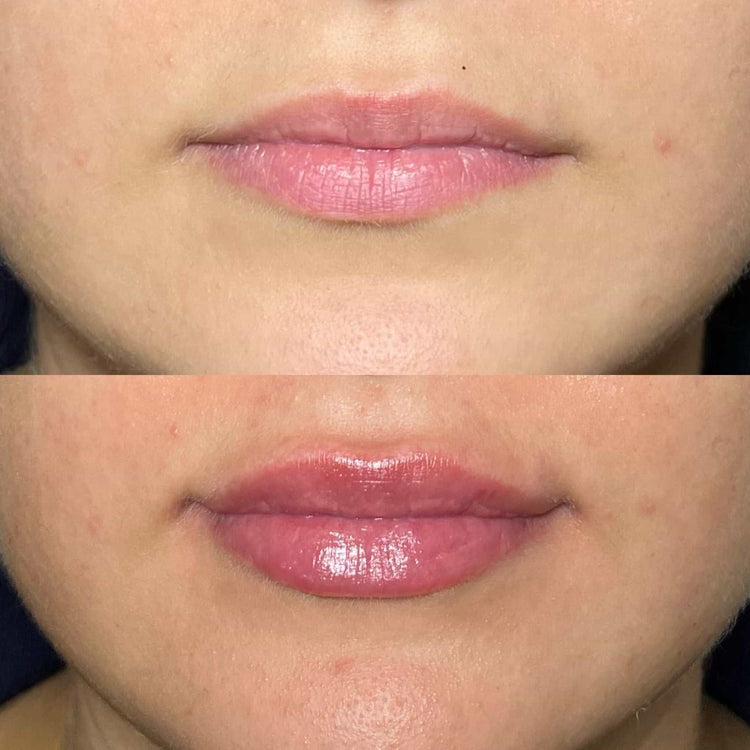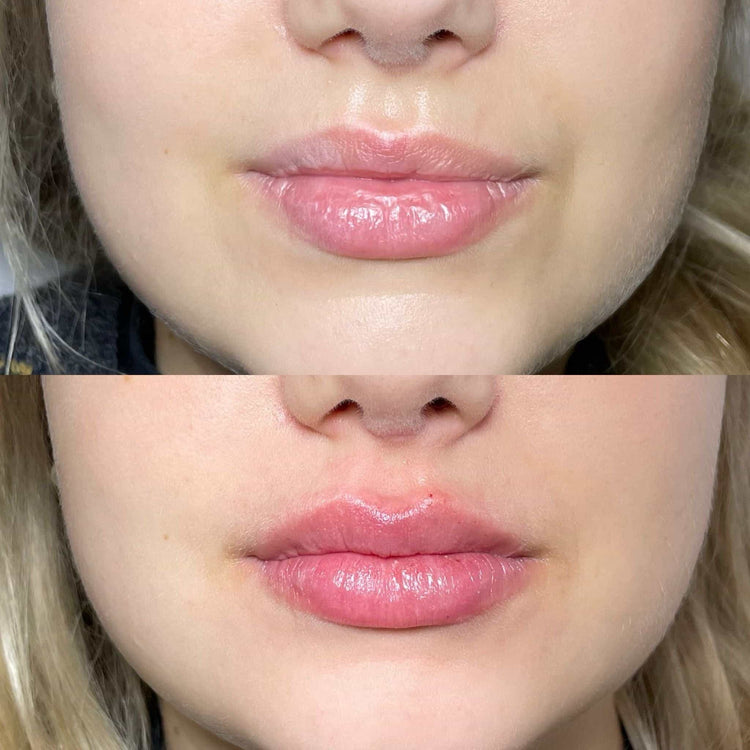Medical History & Current Medications
Planning lip injections is an exciting step, but it’s crucial to be fully prepared for your consultation. Being open and honest about your medical history and current medications can help your practitioner determine the safest and most effective treatment plan for you.
Allergies and Previous Reactions
When discussing your medical history, provide details about any past surgeries, particularly those involving facial tissues. Mention any skin conditions you have, like acne or eczema, as they can influence how your lips respond to injections. Be transparent about your current medications, including over-the-counter drugs and supplements, as some medications can interact with anesthetic agents used during the procedure.
Existing Medical Conditions
It’s also important to disclose any existing medical conditions, such as allergies, autoimmune disorders, or bleeding disorders. Certain medical conditions might require modifications to the treatment or necessitate additional precautions during the procedure.
By openly sharing this information, you empower your practitioner to make informed decisions about your treatment, minimizing potential risks and ensuring the best possible outcome for your lip injections.
Medications You Take Regularly
Planning lip injections is an exciting step, but it’s crucial to be fully prepared for your consultation. Being open and honest about your medical history and current medications can help your practitioner determine the safest and most effective treatment plan for you.
When discussing your medical history, provide details about any past surgeries, particularly those involving facial tissues. Mention any skin conditions you have, like acne or eczema, as they can influence how your lips respond to injections. Be transparent about your current medications, including over-the-counter drugs and supplements, as some medications can interact with anesthetic agents used during the procedure.
It’s also important to disclose any existing medical conditions, such as allergies, autoimmune disorders, or bleeding disorders. Certain medical conditions might require modifications to the treatment or necessitate additional precautions during the procedure.
By openly sharing this information, you empower your practitioner to make informed decisions about your treatment, minimizing potential risks and ensuring the best possible outcome for your lip injections.
Lip Augmentation Goals
Before embarking on the journey of lip augmentation, it’s essential to have a clear understanding of what you want to achieve. Clearly define your desired outcomes: Are you aiming for subtle enhancement or a more dramatic transformation? Consider the shape and size you envision for your lips – fuller, plumper, or simply defined with a natural-looking enhancement?
Desired Volume and Shape
Think about what kind of look you’re hoping for. Do you want a natural plumpness or something more dramatic? Visualize your ideal lip shape – would you like them to be fuller, narrower, rounder, or heart-shaped? Having these details in mind will help your practitioner understand your vision and recommend the best treatment approach.
Bringing images of lips you admire can be incredibly helpful. This gives your practitioner a concrete reference point to understand your aesthetic preferences. Remember, clear communication is key to achieving the lip augmentation results you desire.
Inspiration Pictures
Before embarking on the journey of lip augmentation, it’s essential to have a clear understanding of what you want to achieve. Clearly define your desired outcomes: Are you aiming for subtle enhancement or a more dramatic transformation? Consider the shape and size you envision for your lips – fuller, plumper, or simply defined with a natural-looking enhancement?
Think about what kind of look you’re hoping for. Do you want a natural plumpness or something more dramatic? Visualize your ideal lip shape – would you like them to be fuller, narrower, rounder, or heart-shaped? Having these details in mind will help your practitioner understand your vision and recommend the best treatment approach.
Bringing images of lips you admire can be incredibly helpful. This gives your practitioner a concrete reference point to understand your aesthetic preferences. Remember, clear communication is key to achieving the lip augmentation results you desire.
Realistic Expectations
When considering lip augmentation, it’s important to have realistic expectations. While lip injections can enhance your appearance, they won’t drastically change your facial structure or create a look that’s completely different from your natural features.
It’s best to approach lip augmentation as a way to subtly enhance your existing beauty rather than transforming yourself entirely. Remember, everyone’s lips are unique, and the results of lip injections will vary depending on factors such as individual anatomy, skin thickness, and the amount of filler used.
Procedure Details
During your consultation for lip injections in the UK, understanding the procedure details is crucial. You’ll need to discuss your desired outcome, including the shape, size, and fullness you envision for your lips.
Types of Filler Used
A key aspect of your consultation will involve understanding the types of filler used. Hyaluronic acid is the most common type employed in lip injections. It’s a naturally occurring substance in the body that attracts and retains water, adding volume and hydration to the lips.
There are various brands and formulations of hyaluronic acid fillers available, each with slightly different properties. Your practitioner will recommend the best option based on your individual needs and desired outcome.
Other types of fillers, such as poly-L-lactic acid (PLLA), may also be discussed. PLLA stimulates collagen production, resulting in a more gradual and long-lasting volumizing effect.

Injection Techniques
During your consultation for lip injections in the UK, understanding the procedure details is crucial. You’ll need to discuss your desired outcome, including the shape, size, and fullness you envision for your lips.
A key aspect of your consultation will involve understanding the types of filler used. Hyaluronic acid is the most common type employed in lip injections. It’s a naturally occurring substance in the body that attracts and retains water, adding volume and hydration to the lips.
There are various brands and formulations of hyaluronic acid fillers available, each with slightly different properties. Your practitioner will recommend the best option based on your individual needs and desired outcome.
Other types of fillers, such as poly-L-lactic acid (PLLA), may also be discussed. PLLA stimulates collagen production, resulting in a more gradual and long-lasting volumizing effect.
Understanding injection techniques is also important. Hyaluronic acid fillers are typically injected using very fine needles. Your practitioner will carefully map out the injection sites to achieve your desired lip shape and fullness.
Different injection techniques may be employed depending on the area being treated and the desired outcome. For instance, certain techniques focus on adding volume to the center of the lips (the cupid’s bow), while others aim to enhance the contours or define the lip border.
Number of Syringes Required
Understanding the number of syringes required is essential for planning your treatment. This will depend on factors such as your desired volume, the type of filler used, and individual lip anatomy.
During your consultation, be sure to ask about the expected amount of filler needed to achieve your desired outcome. Your practitioner will assess your lips and discuss the number of syringes they recommend for a safe and effective treatment.
Aftercare Instructions
Before embarking on lip injections in the UK, understanding the aftercare instructions is crucial for ensuring optimal healing and long-lasting results. These instructions will typically cover key aspects such as avoiding rubbing or touching your lips, applying ice packs to minimize swelling, and refraining from strenuous activities that could put pressure on the treated area.
Initial Recovery Time
Aftercare instructions are vital for ensuring successful healing and optimal results after lip injections. They generally advise against touching or rubbing your lips excessively, as this can disrupt the filler placement and potentially lead to bruising or unevenness.
Applying ice packs for short periods can help reduce swelling and discomfort. Avoiding strenuous activities or facial exercises that put pressure on the treated area is also important during the initial recovery period.
Your practitioner will provide specific instructions tailored to your individual needs, including recommendations for skincare products to use or avoid during healing.
Initial recovery time for lip injections typically ranges from a few days to a week. Most people experience mild swelling and tenderness that gradually subsides within the first few days.
During this period, it’s essential to follow your practitioner’s aftercare instructions carefully. Most activities can be resumed within a few days, but avoid strenuous exercise or activities that put pressure on your lips until your practitioner approves.
Signs of Complications
Aftercare instructions are crucial for ensuring successful healing and optimal results after lip injections. They generally advise against touching or rubbing your lips excessively, as this can disrupt the filler placement and potentially lead to bruising or unevenness. Applying ice packs for short periods can help reduce swelling and discomfort. Avoiding strenuous activities or facial exercises that put pressure on the treated area is also important during the initial recovery period. Your practitioner will provide specific instructions tailored to your individual needs, including recommendations for skincare products to use or avoid during healing.
Initial recovery time for lip injections typically ranges from a few days to a week. Most people experience mild swelling and tenderness that gradually subsides within the first few days. During this period, it’s essential to follow your practitioner’s aftercare instructions carefully. Most activities can be resumed within a few days, but avoid strenuous exercise or activities that put pressure on your lips until your practitioner approves.
Signs of complications following lip injections are rare but should be watched for and reported to your practitioner promptly. These can include:
* **Excessive swelling or bruising:** While some swelling is normal, if it’s severe, doesn’t subside after a week, or gets worse, seek medical attention.
* **Pain that worsens or doesn’t improve:** Discomfort should lessen over time. If the pain increases or doesn’t improve with over-the-counter pain relievers, contact your practitioner.
* **Redness or warmth around the injection sites:** This could indicate an infection and requires prompt medical attention.
* **Unusual lumps or bumps:** These may signify filler migration or a reaction. Report them to your practitioner immediately.
Remember, open communication with your practitioner is vital throughout the entire process – from your initial consultation to aftercare and any potential complications.
Follow-Up Appointments
Aftercare instructions are crucial for ensuring successful healing and optimal results after lip injections. They generally advise against touching or rubbing your lips excessively, as this can disrupt the filler placement and potentially lead to bruising or unevenness. Applying ice packs for short periods can help reduce swelling and discomfort.
Avoiding strenuous activities or facial exercises that put pressure on the treated area is also important during the initial recovery period. Your practitioner will provide specific instructions tailored to your individual needs, including recommendations for skincare products to use or avoid during healing.
Follow-up appointments are usually scheduled a few weeks after the initial treatment to assess the results and address any concerns you may have. During these appointments, your practitioner can check the placement of the filler, evaluate the overall appearance of your lips, and make adjustments if necessary.
Pricing & Payment Options
Understanding the pricing and payment options for lip injections in the UK is important before your consultation. Be prepared to discuss your budget and explore different financing options if needed.
Cost Breakdown for the Procedure
Pricing for lip injections can vary depending on factors such as the amount of filler used, the experience of the practitioner, and the location of the clinic. It’s essential to inquire about the cost breakdown during your consultation. This typically includes:
The cost of the filler itself.
The practitioner’s fee for administering the injections.
Any additional charges, such as a consultation fee or local anesthesia costs.
Payment options vary among clinics, with many accepting cash, credit cards, and debit cards. Some clinics may also offer financing plans or payment installments to make the treatment more affordable.
Financing or Payment Plans Available
Understanding the pricing and payment options for lip injections in the UK is important before your consultation. Be prepared to discuss your budget and explore different financing options if needed.

Pricing for lip injections can vary depending on factors such as the amount of filler used, the experience of the practitioner, and the location of the clinic. It’s essential to inquire about the cost breakdown during your consultation. This typically includes:
The cost of the filler itself.
The practitioner’s fee for administering the injections.
Any additional charges, such as a consultation fee or local anesthesia costs.
Payment options vary among clinics, with many accepting cash, credit cards, and debit cards. Some clinics may also offer financing plans or payment installments to make the treatment more affordable.
Risks and Potential Side Effects
While lip injections can enhance your appearance, it’s crucial to be aware of potential risks and side effects. These can include swelling, bruising, infection, and allergic reactions. It’s important to discuss any pre-existing medical conditions or medications you take with your practitioner to ensure safe treatment.
Common Side Effects
Lip injections are generally safe when performed by a qualified practitioner, but like any medical procedure, they carry potential risks and side effects. Understanding these beforehand is essential for making an informed decision.
Common side effects of lip injections often include swelling, bruising, tenderness, redness, and itching around the injection site. These usually subside within a few days to a week with proper aftercare.
Less common but more serious potential side effects include infection, allergic reactions (which may require medical attention), filler migration (where the filler moves out of its intended area), or changes in lip sensation.
It’s crucial to choose a practitioner who is experienced and uses sterile techniques to minimize the risk of complications.
Be sure to discuss any concerns or questions you have with your practitioner during your consultation to ensure you understand the potential risks and benefits before proceeding with the procedure.
Serious Adverse Reactions
While lip injections are generally safe when performed by a qualified practitioner, it’s crucial to be aware of potential risks and side effects. These can include swelling, bruising, infection, and allergic reactions. It’s important to discuss any pre-existing medical conditions or medications you take with your practitioner to ensure safe treatment.
Common side effects of lip injections often include swelling, bruising, tenderness, redness, and itching around the injection site. These usually subside within a few days to a week with proper aftercare.
Less common but more serious potential side effects include infection, allergic reactions (which may require medical attention), filler migration (where the filler moves out of its intended area), or changes in lip sensation.
It’s crucial to choose a practitioner who is experienced and uses sterile techniques to minimize the risk of complications.
Be sure to discuss any concerns or questions you have with your practitioner during your consultation to ensure you understand the potential risks and benefits before proceeding with the procedure.
Get fuller, more youthful lips with lip injections by Dr. Laura Geige at It’s Me & You Clinic
- The Growing Demand For Baby Botox In Kingston Upon Thames Aesthetics - November 13, 2025
- Why Do I Suddenly Have A Turkey Neck? - November 2, 2025
- What Is The Best Procedure For Deep Wrinkles Around The Mouth? - October 30, 2025
